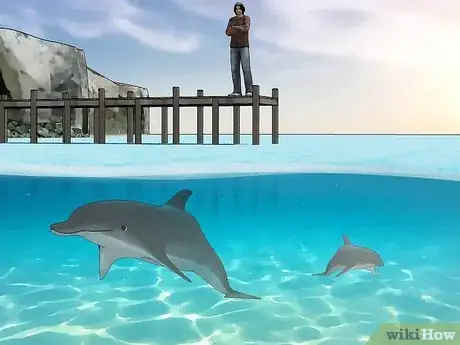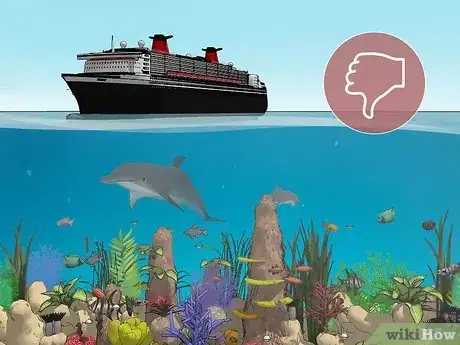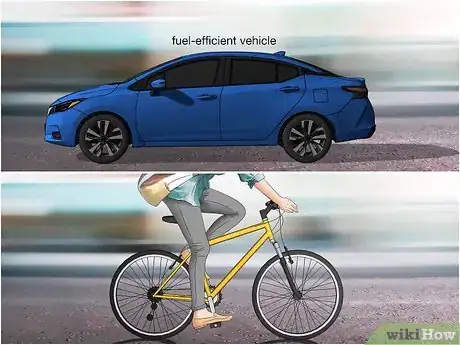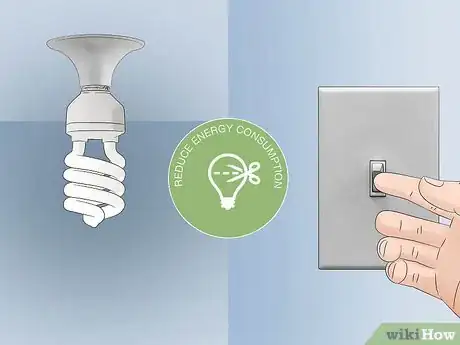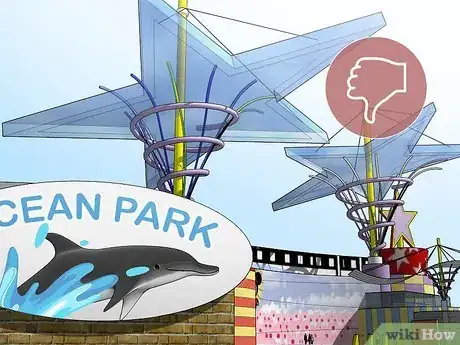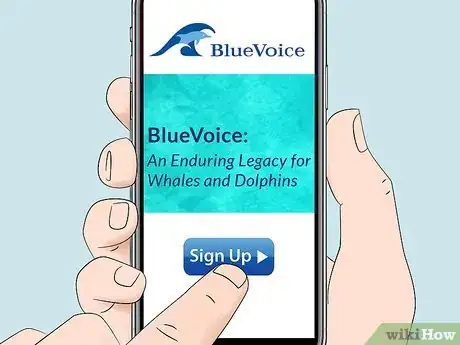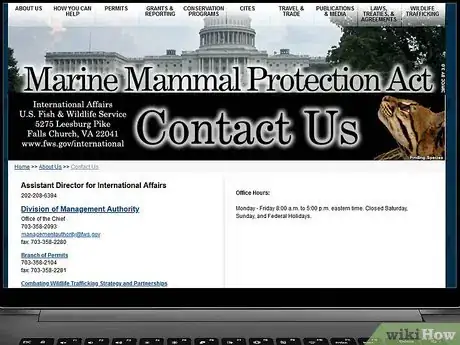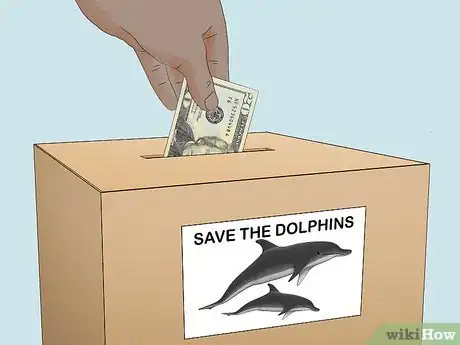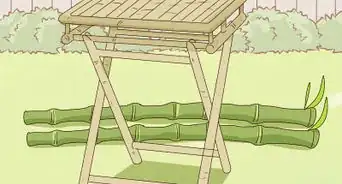wikiHow is a “wiki,” similar to Wikipedia, which means that many of our articles are co-written by multiple authors. To create this article, 35 people, some anonymous, worked to edit and improve it over time.
wikiHow marks an article as reader-approved once it receives enough positive feedback. In this case, several readers have written to tell us that this article was helpful to them, earning it our reader-approved status.
This article has been viewed 56,220 times.
Learn more...
Dolphins are an endangered species of aquatic wildlife. The rising temperature of the seas, increasing levels of man-made pollutants in dolphin habitats, and the existence of dolphin hunts in some parts of the world all serve to keep dolphins on the brink. But the situation is not hopeless. These mammals are social, emotional, extremely intelligent, and worthy of our protection. There's a lot you can start doing to keep the oceans clean, spread the word about the dangers facing dolphins, and get involved. See Step 1 for more information.
Steps
Keeping the Ocean Clean
-
1Leave dolphins alone. One of the easiest ways you can help to keep dolphins safe is to leave them be! You should never attempt to feed dolphins, pet dolphins, or interrupt their way of life if you happen to see them in the ocean or in some freshwater rivers.
-
2Avoid taking commercial cruise liners through endangered areas where you'll likely encounter dolphin populations and coral reefs. It's estimated that these ships destroy hundreds of yards of delicate coral every year, which provide habitat and shelter for dolphins and other marine life.[1]
- Even if you're a big fan of dolphins and would like to see them up close, sea-themed parks and aquatic swim-with-dolphins programs serve to keep dolphins in captivity, where they experience significantly shorter life spans. Improper physical contact with dolphins can transfer diseases, making dolphins susceptible to fungal infections and a host of other problems. It's much safer to leave them alone where they can live peacefully and happily.
Advertisement -
3Make informed seafood purchases. One of the most dangerous threats to dolphin populations is commercial fishing, and the nets the fishermen use. If you eat seafood, it's important to make careful and intelligent seafood purchases. There are only so many fish in the sea, and many commercial fishing operations do more harm than good, while others harvest fish responsibly and sustainably. So how can you be sure you know where your salmon, tuna, or shrimp are coming from? Seafood Watch publishes a free annual watch list, tracking the practices and the fishing statistics in the given you, allowing you to make up-to-date decisions and buy the safest seafood.
- The tuna fishing industry is the culprit most often blamed for dolphin deaths, and "dolphin-safe" tuna is a label you can often find at grocery stores. That's an easy way to make a simple change, but the problem is much larger than just tuna. Make sure you stay informed and learn everything you can about the operation.
-
4Boycott Styrofoam products and non-biodegradable consumer goods. Human waste is the number one contributing factor to the degradation of life in the oceans, with 80% of marine pollution originating on land.[2] The impact is enormous, and even something as simple as releasing a helium balloon into the sky can end up contributing the garbage that chokes the dolphin population out. Take steps now to reduce your non-biodegradable garbage.
- It doesn't need to be complicated. Take little steps by avoiding plastic coffee cups when you go to the coffee shop, bringing your own reusable thermos instead. Avoid packaged food and products with excessive plastic packaging, choosing instead to purchase bulk groceries, or used goods. Reuse plastic bags and avoid getting new ones at the store.
- The "trash vortex" is a patch of garbage that floats in the North Pacific ocean, made up primarily of plastics, Styrofoam, and other garbage carried by the current into a single place where it swirls constantly. It's the size of Texas and it's full of dead ocean-life, birds, and other creatures that became ensnared in the waste. If you want to save dolphins, the impact of human waste on the ocean must be reduced immediately.[3]
-
5Reduce your carbon footprint. It's not just physical waste that interrupts the flow of life in the oceans. Just as significant is air pollution, which resettles into fresh water and flows back into the oceans, making up about a third of contaminants in coastal areas.
- Our use of fossil fuels is directly related to the health of the oceans, meaning that any steps you can take to reduce your carbon footprint from transportation will be directly linked to the safety of dolphins. Start taking steps to drive less, switch to more fuel-efficient vehicles, or seek alternate methods of transportation, like walking, riding your bicycle, and sharing rides.
- There are somewhere in the neighborhood of 65,000 chemicals approved for use in commercial and industrial cleaners, as well as automotive products, and only about 300 of them have been tested for toxic properties. We have no idea about the impact seemingly "safe" products have on the environment.[4]
- Oil tanker spills get a lot of airplay, but sewage runoff sends twice as much oil into coastal waters every year. Non-source point pollution is extremely difficult to control or trace, since it comes from the air, though we can be sure that most of it is directly related to commercial pollutants and industrial waste.
-
6Fight global climate change. As the temperatures of the ocean change, even by a few degrees, the whole delicate balance of the sea habitat will be thrown off, affecting the way dolphins and other sea creatures survive. As populations dwindle, it'll become more and more difficult for dolphins to compete with other species for a reduced amount of food. If the temperatures don't stabilize, it'll be very difficult for dolphins to survive.
- Reduce your energy consumption, focus on reducing physical waste, and make more informed purchases with commercial cleaners, soaps, and other household products to reduce your own impact. Avoid anything with parabens, phosphates, and Styrofoam.
- Aside from temperatures, oxygen depletion is a major problem associated with global climate change. Nitrogen and phosphorus are elements found in fertilizer, commercial toxins, and sewage, which enter coastal waters and deplete the oxygen in the water. Think of it as sucking the air out of a room the dolphins breathe in. A single gram of nitrogen or phosphorus can deplete between 10 and 100 grams of oxygen in seawater.
Getting Involved
-
1Boycott marine theme parks that keep dolphins in captivity. While it's fun to go see dolphins up close doing tricks, these parks separate baby dolphins from their mothers, keep them enclosed in tanks, feed them drugs, and force them to breed at exceptionally young ages. They've also been accused of unsafe work environments for humans and dolphins alike, making parks like SeaWorld dangerous and unethical. Don't support them.
-
2Get the word out and make it loud. The biggest thing you can contribute to the cause of dolphins is your voice. If you care about keeping dolphins safe, shout it from the rooftops and learn everything you can about the dangers that face the dolphin population in your area.
- Subscribe to dolphin watch organizations to keep up-to-date on current efforts and legislation that you could contribute to and encourage others to participate in. BlueVoice is an ocean conservation organization that works to save dolphins and whales, specifically by tracking and fighting dolphin hunts in Japan and Peru.
- Devote a considerable amount of your social media presence to dolphin causes and making others aware of what's going on in the oceans. The more people know what to avoid and are aware of the threat that dolphins face, the more changes can be made.
-
3Encourage your congressional leader to strengthen the Marine Mammal Protection Act. In the 1970s, the government passed a bill designed to keep dolphins and other marine mammals safe, but it wasn't until the mid-80s that stronger guidelines were put in place, specifically related to tuna fishing. The impact of these regulations made a huge difference then, in the short term, but little has been done in the decades since. It's time to revisit the issue, so you should let your representative know you mean business. Get in touch immediately.
- Most communications happen online, so you can usually visit your senatorial or congressional representative's website to learn more about how to get in touch directly. Draft a letter laying out a specific plan of action and demand results, or deny your vote during the next election cycle. Changes specifically need to take into account the commercial and industrial pollutants and the way these contribute to the deaths of marine mammals.
-
4Donate to marine wildlife foundations. Lots of organizations are already in place, fighting the good fight against pollution and ocean injustice. They're often in dire financial straights, however, making any assistance you can offer extremely valuable. This is an especially great way to contribute if you're busy to participate directly, but feel passionate about the cause.
- Organizations like the International Fund for Animal Welfare (IFAW), Greenpeace, BlueVoice, and other groups are all devoted to saving the lives of dolphins and they all would appreciate financial help to continue the cause.
-
5Organize more significant boycotts in your area. Avoiding products and making smart purchases is a good step for you to take along–every single person makes a difference–but if you can rally the troops and make a more significant impact with larger numbers, your contribution will be much greater.
- Try to work on changing your own household first, getting everyone you live with to contribute to the proper consumer choices, then start holding open meetings at a community center or church to share what you know and get others on board.
- Getting in touch and spreading the word with letters to your local paper, sharing links on social media, and even making up posters can do a lot to share your message and let people know how they can make a difference.
-
6Start your own activist group. If you've got a growing group of like-minded people concerned about the plight of the dolphins, consider starting your own activist group to organize protests, boycotts, and stage information-disseminating meetings so that more and more people will become aware of the issues. The more people involved, the more the government will have to listen and make the changes necessary to take action. Media is the strongest source of defense for fighting against the threats that harm dolphins.
- Declare your organization with the IRS and apply for non-profit status if you grow large enough to have significant operating costs and want to start collecting donations from visitors to the site.
Taking Action
-
1Study marine biology. If you want to take the next step from dolphin-lover to professional defender of the dolphins, going into marine biology is the biggest likely career choice. This will not only allow you to be around the animals you love and hope to protect, but will allow you to study the ways in which the environment of dolphins is affected by the human footprint, and how to improve that environment.
- In school, work hard in biology and take as many natural science classes as you can. You won't start out by learning to scuba dive and swim with dolphins, but you'll be building the necessary foundation to possibly do something like that for a living.
- When you get to college, there probably won't be a "marine biology" major, unless you're at certain coastal universities, but getting a general biology degree will allow you to specialize at the graduate level. Take your education one step at a time.
-
2Join a radical marine justice organization. For some people, it's not enough to donate some money and sit back to wait for changes passively. If you're frustrated with the slow process that justice usually takes, you might consider getting involved more directly with an activist group that works to disrupt the forces that endanger dolphins and other marine life.
- The Sea Shepherd Conservation Society
- The Animal Liberation Front (ALF)
- The Taiji Action Group
- People for the Ethical Treatment of Animals (PETA)
- Greenpeace
-
3Take action against corporate polluters. Many activist organizations, Greenpeace especially, organize user-friendly activism and signature-gathering operations to disrupt corporate attempts to maintain the status-quo. These groups draw attention to the ways that corporations shirk their environmental responsibility to maximize profits and attempt to hold them to it. It usually benefits industry to work unregulated and unimpeded by things like carbon caps and environmental restrictions, which keeps the oceans polluted and dolphins in danger. Work to change that.
- Much of the dubious decision making happens at the legislative level, where corporate lobbyists work to change environmental legislation to indirectly benefit the entities that are destroying it. It can be awfully confusing for the layman, making your contributions to more professional organizations a lot easier than trying to go it alone.
-
4Attend rallies and stage your own protests. Get your organization to post up outside of heavy polluters and try to get as much media coverage as you possibly can, spreading the word about how their pollution is affecting the dolphin population. Greenpeace consistently organizes rallies and protests of major polluters, which you can subscribe to even if you're not a contributing member.[5]
- Be tenacious and be loud. You probably won't get an oil company to start cleaning up their act just by waving some signs around, but you can draw attention to what's happening, get on television, and make people start paying attention. Throw the ball into their court. Numbers are important, but even small protests register if the cause is important enough and if you've got controversy on your side.
-
5Disrupt the fishing industry directly. Depending on the group you join, you might end up cutting fishing nets in international waters or riding around on anti-whaling ships to get in the face of illegal whalers like a pirate, or you might be mostly collecting signatures and combing through paperwork. How deep you dive into the dolphin-saving waters will be up to you, but direct action will ensure results. Get involved and fight the good fight.
- While it may seem glamorous, hardcore radical activism can be dangerous and often illegal. If you're willing to get arrested to serve the cause, you need to do so as part of an organized effort, not by going rogue and getting yourself into trouble without any support.
Community Q&A
-
QuestionWhat can I do to help dolphins?
 Puppy FeetCommunity AnswerDon't litter, buy dolphin-safe fish products, and conserve water.
Puppy FeetCommunity AnswerDon't litter, buy dolphin-safe fish products, and conserve water. -
QuestionWhat can you do as a kid to help?
 sayyida raniaCommunity AnswerYou could make posters and banners. You could donate your pocket money, and you could even create a school committee to raise money and have meetings for everyone to share ideas.
sayyida raniaCommunity AnswerYou could make posters and banners. You could donate your pocket money, and you could even create a school committee to raise money and have meetings for everyone to share ideas. -
QuestionWhat other things can I do to help dolphins and other marine animals?
 Community AnswerYou can join a recycling club to help prevent litter from being dumped into the ocean, and when you go to the beach, you can pick up any trash you find. You can also try to help out any organizations to save sea creatures.
Community AnswerYou can join a recycling club to help prevent litter from being dumped into the ocean, and when you go to the beach, you can pick up any trash you find. You can also try to help out any organizations to save sea creatures.
References
- ↑ http://www.dolphins-world.com/dolphin-conservation-efforts/
- ↑ http://oceanservice.noaa.gov/facts/pollution.html
- ↑ http://www.greenpeace.org/international/en/multimedia/videos/The-Trash-Vortex/
- ↑ http://seawifs.gsfc.nasa.gov/OCEAN_PLANET/HTML/education_threats.html
- ↑ https://greenwire.greenpeace.org/usa/en
About This Article
To save dolphins from pollution and climate change, you can donate to marine wildlife foundations, like the International Fund for Animal Welfare, Greenpeace, or Bluevoice, which fight against pollution and ocean injustice. You can also try to reduce your carbon footprint by walking, cycling, or ridesharing instead of driving everywhere. Another way to help the environment is boycotting Styrofoam and non-biodegradable products, which often end up in the oceans and harm sea life. While it may be fun to see dolphins up close in sea parks, you should also boycott these, which are unnatural and unjust environments for sea life. For more tips, including how to reduce your energy consumption in your home to save dolphins, read on!
